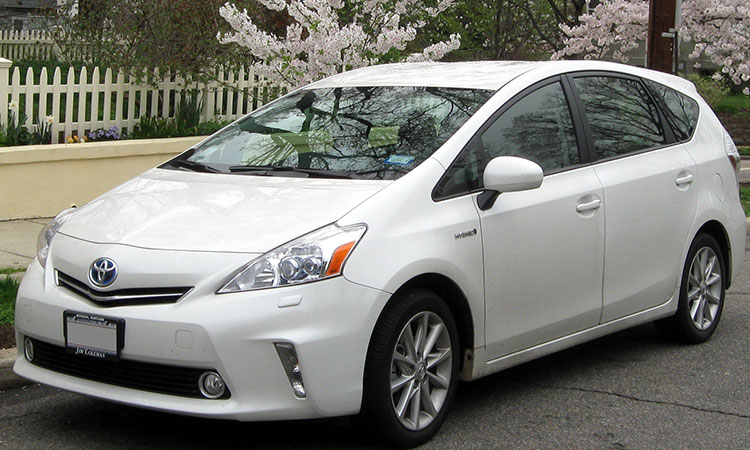The Purpose of Patents
Patents serve a dual purpose that goes beyond helping inventors secure the rights to their creations.
It’s true. Despite granting inventors a “monopoly” over their product or process, patent protection exists to “advance the sciences.”
How? By giving others a chance to improve on patented work.
“A PATENT IS AN EXCLUSIVE RIGHT GRANTED FOR AN INVENTION, WHICH IS A PRODUCT OR A PROCESS THAT PROVIDES, IN GENERAL, A NEW WAY OF DOING SOMETHING, OR OFFERS A NEW TECHNICAL SOLUTION TO A PROBLEM. TO GET A PATENT, TECHNICAL INFORMATION ABOUT THE INVENTION MUST BE DISCLOSED TO THE PUBLIC IN A PATENT APPLICATION.”
– World Intellectual Property Organization (WIPO)
In other words, to acquire a patent, you must provide full disclosure of your invention, including how it works and how it came to be.
The Benefit of Having a Monopoly
According to the United States Patent and Trademark Office (USPTO), a patent allows recipients “to exclude others from making, using, offering for sale, or selling the (patented) invention throughout the United States or importing the invention into the United States” for 20 years from the original filing date.
Of course, if someone else improves on your work in a way that wasn’t obvious before, that person can apply for a patent on that specific improvement, while you still maintain rights over your original invention.
The fact is, most of today’s inventions are improvements made to existing devices or technologies.
How to Leverage a Patent
While many people initially think of enforcement, the reality of patent enforcement is that it’s long, expensive and uncertain. Most companies don’t randomly engage in patent litigation, and neither should you. Here are six more important ways you can put a patent to work:
- To prevent or delay the competition from invading your turf Having the ability to apply “patent pending” to your intellectual property puts your competitors on notice. They’ll know that should you eventually receive a patent, you will have the ability to claim damages dating back to the first act of infringement.
- To use as a marketing tool Filing for a patent gives you the ability to communicate that your invention is “patent pending.” This can help you build market penetration earlier while positioning you as a thought leader in your market segment.
- To explore licensing If your invention improves on an existing product or would be of value to another party, you can receive compensation each time your patented item is used or sold by negotiating a licensing agreement.
- To counteract your competitors If your direct competitor is obtaining patents, you can seek patents of your own as a way to maintain leverage should your marketplace nemesis ever bring litigation against your company.
- To utilize during M&A or joint venture negotiations Patents can act as bargaining chips or additional assets on a balance sheet during the negotiation of complex business transactions.
- To build corporate value for potential and current investors In most cases, investors will see patents as added value. To attract venture capital, having formal patent protection surrounding your inventions can pay off big.
(Read more: Optimizing Your Patent Portfolio)

Patent Types
There are three types of patents, although only a few companies need to be worried about “plant patents.” The main patent types most businesses should be familiar with are:
Utility Patents
Utility patents protect an invention or “article of manufacture” itself, including processes to make and use it.
Utility patents remain in effect for 20 years from the original filing date, although protection does not begin until a patent has been issued.
Apple Inc.’s iOS operating system is an example of technology that is protected by a utility patent.
Design Patents
Design patents protect the appearance of a product as seen by others, which covers “unique, non-functional design elements considered important to product differentiation.”
Design patents remain in effect for 14 years from the original filing date, although protection does not begin until a patent has been issued.
The graphical user interface of the computer, tablet or phone you’re using right now is almost certainly protected by a design patent.



How to Know if Your Invention is Patentable
Your Invention Must Be “Useful”
You may be thinking, “well, maybe no one will think my invention is useful,” but you’d be thinking about this requirement all wrong. “Useful” just means your product or process does what it was created to do, which cannot be anything that could be considered “immoral, frivolous or mischievous.”
For instance, the invention of a device that enables motor vehicles to “cheat” emissions testing would likely be labeled “immoral” and “mischievous” and perhaps ineligible for patent protection.
Your Invention Must Be “Non-Obvious”
Also known as the “inventive step,” this requirement states an invention cannot be identical to prior art or be obvious to someone with ordinary skill in the art. How can you determine what differences are “obvious” and which are not? That’s actually where a company will realize the most help from a patent attorney, because there is no hard and fast rule. Instead, there are various factors that need to be considered.
For example, some factors that argue in favor of an invention being “non-obvious” is when that invention fulfills a “long-felt but unmet need,” is the result of the “failure of others” to develop it first, delivers “unexpected results” or has the potential “for commercial success.”
Example: Toyota has patents throughout the world for its “Hybrid Synergy Drive” gas/electric engine technology because:
- It met a “long-felt but unmet need” for ultra-fuel-efficient automotive engine technology
- It was the result of the failure of other manufacturers to develop such technology
- It delivered unexpected results by combining extremely low fuel consumption with performance that fit the needs of today’s drivers
- It had the potential for commercial success due to a combination of consumer demand and Toyota’s vast production capabilities
Your Invention Must Be “New”
This is known as the “novelty” requirement. To be considered “new,” your invention must be different from “prior art.” Prior art encompasses all devices, compositions and processes that currently exist. To put it in layman’s terms, your creation cannot be identical to someone else’s.
To protect the patentability of your invention, your product or process cannot be previously known or used by the public before filing, sold or offered for sale, described in a printed publication or invented by another more than one (1) year before your patent application is filed.
Things to Avoid:
- Commercialization and marketing activities: Put a hold on the radio ads – the catchy jingle can wait.
- Disclosure without the use of an agreement: Before you talk, make sure they’ve signed an agreement with you, such as one of the following:
Non-Disclosure Agreement (NDA) – Commonly referred to as a “confidentiality agreement,” an NDA is a contract where the recipient agrees not to disclose any of the confidential information you’re about to share.
Joint-Development Agreement (JDA) – A contract signed by you and another party with whom you will be working that outlines details regarding ownership, distribution and financial obligations.
Joint Venture (JV) – A business agreement where two or more parties decide to work together for a set period of time to finance and develop a new product or process.

Early Public Disclosure – Why It Matters
Public disclosure is a big deal. In the rest of the world, once you publicly disclose your invention, you can’t get a patent on it. In the U.S., we’re gracious. We give you one (1) year to get your application filed. But if you go to a convention and share your work before filing for a U.S. patent, you sacrifice your ability to file for a patent anywhere else.
Limited or controlled testing is OK as long as you’ve filed a provisional patent application first. Otherwise, make sure people hearing your pitch have signed a non-disclosure agreement before you get things underway.
Don’t Wait Too Long
Not long ago, the United States was a “first-to-invent country.” If you created something first but someone else beat you to the patent office, as long as you had documentation to prove your invention was the original, you got the patent.
But with the implementation of the America Invents Act (AIA) in March 2013, the United States joined the rest of the world as a “first-to-file country,” which means that if two people come up with the same idea, the first person to file their patent application wins.
The Value of Provisional Patents
Provisional patent applications give you the ability to claim an “early effective filing date” in a later filed formal or “non-provisional” application, positioning you ahead of any applications your competitors may submit down the road.
They also give you the right to apply “patent pending” to your product or process so that you may publicly explain, test or demonstrate it without hurting your patent chances in the U.S. and abroad.
On top of that, provisional patent applications are quite affordable. In fact, the recently created “Micro Entities” classification allows extremely small businesses and individuals to file a provisional patent application for $65, or 75% off the standard fee.
To be eligible for a non-provisional patent and claim priority from a provisional application, you must apply within 12 months of filing a provisional application.
Identifying New Opportunities
At this stage in the game, you may be looking to file a single patent for your first and only invention. But the key to growth for many startups involves teaching others – your partners, employees or both – how to recognize a patentable technology or invention.
When everyone is on the lookout, you’re more likely to be in position to file for patents before your competitors. But maximizing that benefit takes diligence and a solid process for documenting ideas while helping your employees generate new ones.
(Watch the video: “How Do I Know if a Patent is Worth the Cost?”)
THE PATH FROM “INVENTION”
TO “UTILITY PATENT”
After developing a new product or process, you’ll want to consider submitting an invention disclosure to an experienced patent attorney. A patent attorney can use your disclosure and an optional search of related art to determine if your invention is actually patentable, so you’re not wasting time on something that isn’t.
When investigating patentability, a patent attorney will help you think about:
- If your idea is “new,” “useful,” and “non-obvious” based on current legal criteria
- If prior art exists that could present a problem during the application process
- If your idea is “valuable” in light of the resources required to patent it
- If your idea would be better served by trade secret protection
- The likelihood that your product or process could be licensed or commercialized
- If your invention should be considered a “final version”
- If it would be detrimental for someone else to file for a patent on your product or process. If the answer is “no,” you may not need a patent for your invention after all.
If it looks like your invention is in fact patentable, your attorney would then recommend the drafting of a patent application.
What to Include in a Patent Application
- A duplication of your invention. Well, not exactly. Your patent application must include a disclosure – usually a detailed description accompanied by some figures – that is specific enough for your work to be recreated without “undue experimentation”
- Invention claims, or a list of statements that define your product or process
- An oath and declaration that identifies you as the inventor and states your belief that you are the original architect of your invention
After review and approval from you, the inventor, your attorney will file your patent application with the United States Patent and Trademark Office (USPTO), giving you the right to use “patent pending” on your invention.



What happens at the USPTO
- A patent examiner will review your application and perform a search for prior art to determine whether your invention meets current legal standards.
- That same patent examiner will then send an “Office Action” back to you, the inventor, which either rejects your application or grants you a patent.
According to the USPTO, the amount of time between application submission and the issuance of an initial Office Action averaged 18.2 months in 2013.
The reality is, most patent applications face some sort of initial rejection. If that happens, you have three options:
- Filing an argument against the rejection’s merits
- Amending the claims of the patent application
- Abandoning the application
Should you choose to file an argument or amend your claims, you have six (6) months to submit your response.
- Based on your response, your patent examiner will either grant you a patent or send you another rejection.
- The process continues until you receive allowance from the patent examiner or choose to abandon your application altogether.
According to the USPTO, the total amount of time between an application submission and the issuance of a patent averaged 29.1 months in 2013.
The Expedited Review Option
If you’re looking to speed up the review process and you have the funds, you have the ability to request an expedited review, which requires you and your lawyer to complete a more rigorous application and pay an additional $4,800.
This may be seen as unfair to smaller players who lack big funding, although it remains to be seen whether individual inventors and small businesses are losing out on patents because of it.
The U.S. government has tried to offset any perceived inequity by being more “user friendly” to small businesses and individual inventors and introducing the “micro entity” designation discussed earlier.
PATENT PROTECTION
OUTSIDE THE U.S.
After filing for a U.S. patent and disclosing your invention in the process, you have just 12 months to apply for patent protection in another country or countries.
If there is a chance you may end up marketing your invention outside the U.S., you either have to apply for a patent in every applicable country within 12 months or enter a foreign market without patent protection.
Although entering a foreign country without patent protection may force you to face heightened competition once you arrive, many do so with the idea that they will have established a strong enough brand preference beforehand to overcome any foreign competitors later.
An Alternative in the Form of the “Patent Cooperation Treaty”
The Patent Cooperation Treaty, or “PCT,” was established in 1970 so that U.S. inventors could examine up to 140 foreign markets with the filing of a single international application with the USPTO.
While you still must ultimately complete a patent application filing in each of the countries you are interested in, PCT applications give inventors up to 30 months to do so.
With the additional time, you can determine where you want to apply for patent protection, helping you to avoid wasting money filing for patents in what turns out to be an unfavorable market.
How to Decide Where to Seek Foreign Protection
Start by answering the following:
Where do I think I’m going to derive the most revenue?
Where would my most-likely counterfeiters come from?
Because patents protect the way you use, sell, offer for sale or import your product or process, if you manufacture your product in Bangladesh, you may consider filing for patent protection in Bangladesh because that is where you’re most likely to face infringement. On the other hand, if you don’t intend to ever enforce your patent in Bangladesh or don’t believe the market to be of substance, then it might be best to save your resources for another market.
If your product was conceived and is manufactured in the U.S. but it’s best market is Brazil, you would be wise to file for patent protection in the U.S. and Brazil.
At the end of the day, it’s about business presence – where do you believe you’re going to end up – and what is the “value” of protection in a given jurisdiction?





Patent Filing: DIY vs. Legal Companies vs. Law Firms
Doing It Yourself
While applying for patent protection yourself is the cheapest course of action, there is no shortage of risk involved.
While you will only need to pay a federal filing fee, your chance of generating a rejection based on formalities is fairly high, and can lead to plenty of frustration and, perhaps, added legal costs associated with correcting the issues surrounding your application.
What’s more, patent applications cannot be amended and receive the original filing date for all content, which may require added filing or other official fees.
Should your application receive approval despite a claim set that is not as accurate or as robust as it could be, you will almost certainly face challenges later when it comes to your ability to enforce your patent.
Utilizing Legal Technology Companies
Some legal technology companies offer a self-help resources, but they themselves are not law firms. While using such a service represents an affordable option, you face many of the same potential obstacles that you face filing for a patent yourself.
Many legal technology companies will take the product or process description you provide and place it directly into your application without review or assessment. Because of this, your chances of ultimately submitting a problematic description remain high.
While certain providers will allow you to speak with a licensed attorney, beware of “teaser” rates that force you to pay an additional fee for a consultation that usually lasts 30 minutes or less.
Working with a Law Firm
The fact is, filing yourself or using one of the many legal technology companies will save you a few dollars, at least in the short term. But in almost all situations, the counsel you’ll receive from an experienced law firm is well worth the investment.
An experienced attorney can make sure your filing is thoroughly executed and reflects your desired business and technical strategy.
Should your first application be rejected by the USPTO, your attorney can assemble a response to the accompanying Office Action that gives your application its best chance of overcoming the initial rejection.
In short, legal expertise can help to ensure that you avoid missteps in the application process that can cost you significant time and money.
FIRST THINGS FIRST
Take a Look Back
Before you file for a patent, explore whether or not you are bound by an agreement you signed with a former employer. Review past employment contracts for IP clauses and contact your former employer’s HR Director with any questions.
Generally, the rights to intellectual property you create as a part of your duties as an employee belong to your employer.
Take a Look Around
Examine your competitive landscape. Patents grant you the right to prevent others from duplicating your invention, but don’t automatically give you the ability to market that invention if it infringes on an existing patent.
A basic patent search can be performed by visiting patft.uspto.gov or Google Patents, but an experienced patent lawyer can execute a more thorough and strategic evaluation.
Have a Plan
Before you pursue a patent for your invention, decide what it is that you ultimately want to do with that invention – bring it to market yourself, or license it out to a bigger player?
If you’re leading a startup, you’ll want to formulate an exit strategy early on. Think about where you are now and decide where you want to be once things are up and running. Will you keep building or look to sell?
Legal Information is Not Legal Advice
REFERENCES
(1) United States Patent and Trademark Office (USPTO)
(2) World Intellectual Property Organization (WIPO)
